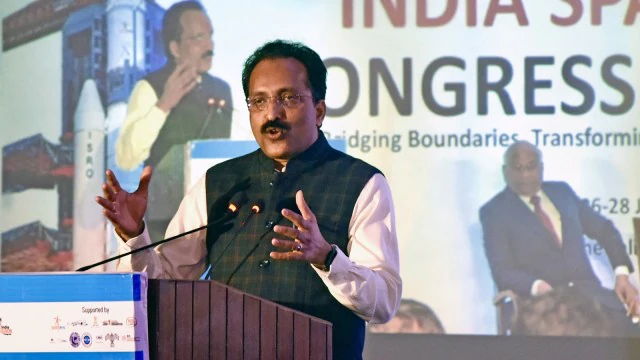Targeted for a 2028 launch, Chandrayaan-4 aims to bring back lunar soil samples to Earth. The mission will be launched in two phases, and could be key to the success of Gaganyaan, which aims to put an Indian on the lunar surface by 2040.
New Delhi: The Indian Space Research Organisation (ISRO) has finalized plans for its own space station, Bharatiya Antariksha Station (BAS), and will soon seek government approval, ISRO Chairman S. Somanath announced on Wednesday.
Plans for Chandrayaan-4, India’s next lunar mission, and the Next Generation Launch Vehicle (NGLV) are also awaiting approval. The NGLV will replace the current Launch Vehicle Mark III (LVM3).
“We’ve defined India’s space station and the NGLV configuration. We’ve also planned Chandrayaan-4, which aims to bring samples back from the moon. Multiple launches are needed as our current rocket cannot achieve this,” Somanath said at the Indian Space Congress 2024.
“For this, we need docking capability in both Earth and lunar orbits. Our Spadex mission will conduct a trial launch this year, with full implementation in Chandrayaan-4. A detailed project report, including costs, is ready for government approval.”
A comprehensive report on the NGLV, detailing its design, configuration, production plan, and costs, is also prepared for government scrutiny.
On August 24, under Somanath’s leadership, ISRO successfully landed Chandrayaan-3 in the lunar south pole region, making India the fourth nation to achieve a lunar landing and the first to land on the Moon’s dark side.
Scheduled for a 2028 launch, Chandrayaan-4 aims to return lunar soil samples to Earth. The mission will be launched in two phases and is crucial for the success of Gaganyaan, which aims to put an Indian on the lunar surface by 2040.
“We have finalized the initial configuration of the BAS, which can be launched using LVM3, our heaviest rocket. We aim to launch the first module of the station by 2028. A detailed proposal is ready, outlining how we plan to build the BAS, the required technologies, the timeline, and the cost.”
Facilities available
Considering the current facilities are “not enough,” ISRO has requested the Centre’s approval for a new launch complex, Somanath said. “For the NGLV, the new launch complex will be significantly larger, weighing nearly 4,000 tonnes and requiring substantial capacity.”
On Wednesday, ISRO’s commercial arm, NewSpace India Ltd (NSIL), signed a partnership with the Australian government. Under the agreement, Australia will invest $18 million in Indian space projects.
The first mission approved under this partnership is an $8.5 million satellite launch contract for the Australian firm Space Machines. In 2026, Space Machines will launch its satellite observation payload aboard ISRO’s privatised rocket, the Small Satellite Launch Vehicle (SSLV).
While this partnership indicates external demand, internal demand remains low. On Monday, Mint reported that challenges in funding procedures for space launches in India could stifle demand in the Indian private sector.
“Demand will come from the communications segment, a major satellite builder. This is why In-Space, the state-affiliated nodal space promotion and authorization agency, emphasized the need to find orbital slots and frequencies that can be allocated to the industry for satellite building. This will be the first step.”
Low-earth orbit
ISRO and In-Space will collaborate with the government and strategic entities to build a low-Earth orbit (LEO) earth observation satellite constellation, which could further boost internal demand, Somanath added.
“There is significant potential in satellite applications. Developing these applications can open up new opportunities. For instance, areas like space timing and the fusion of earth observation with other types of observations can generate demand. There are already some players in these fields, such as Galaxeye, which will enhance the internal capability for satellite production in India.”
Manufacturing in India
“Our goal is to make India a manufacturing hub for satellites and their corresponding launch capabilities. Today, building launchers in numbers is feasible in India. However, the challenge lies in whether to build rockets and wait for long periods or to start building only once the satellites are ready,” Somanath explained.
India’s space sector was privatized in 2020, leading to the emergence of multiple space startups and launch vehicles. Experts predict that within five years, India may have over 80 small rockets, including the SSLV and rockets from private startups like Skyroot Aerospace and Agnikul Cosmos, ready for launch each year.
Addressing this supply will require significant domestic demand. Pawan Goenka, chairman of In-Space, told Mint that the Centre is already considering measures to build this demand. However, the scale-up will also depend on the “commercial potential of satellites and satellite services in the coming years.”
